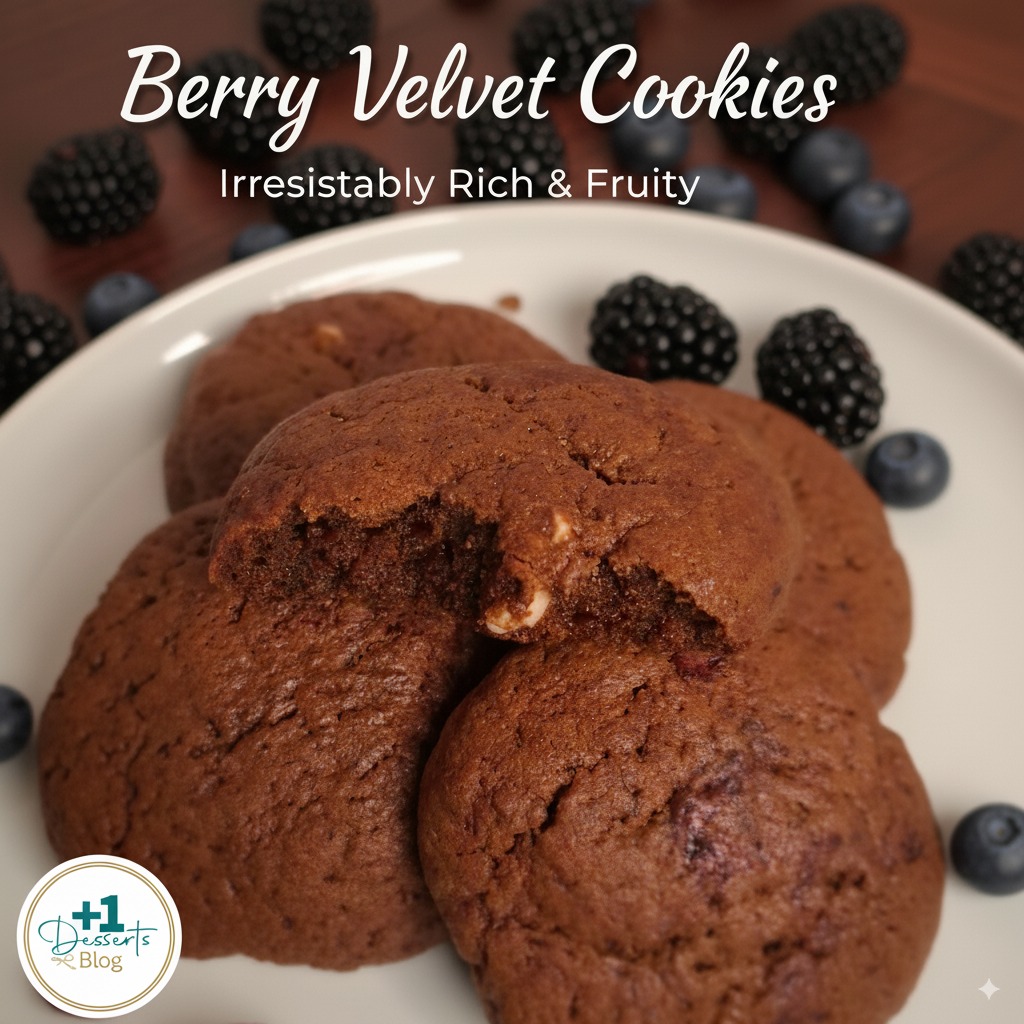Berry Velvet Cookies

Wet Ingredients:
– 115g unsalted butter, softened
– 100g brown sugar
– 50g granulated sugar
– 1 large egg
– 1 tsp vanilla extract/1/2 teaspoon vanilla paste
– 2 tbsp berry purée (see below)
Dry Ingredients:
– 190g all-purpose flour
– ½ tsp baking soda
– ¼ tsp salt
– 1 tbsp cocoa powder (optional, for deeper color and velvet tone)
Mix-ins:
– 100g white chocolate chunks or chips
– Optional: 1 tsp lemon zest (to brighten berry flavor)
👩🍳 Method
1. Cream butter + sugars until light and fluffy (2–3 mins).
2. Add egg, vanilla, and berry purée, mixing until fully combined.
3. In a separate bowl, whisk flour, baking soda, salt, and cocoa powder.
4. Gradually add dry ingredients to wet, mixing until just combined.
5. Fold in white chocolate chunks and optional lemon zest.
6. Chill dough for 30–60 mins (for better texture and color development).
7. Scoop onto lined baking tray and bake at 175°C (350°F) for 10–12 mins.
8. Let cool slightly before serving—cookies will firm up as they cool.
Notes:
Leavener: Use ½ to 1 tsp baking powder instead of baking soda to preserve the vibrant purple color from blackberries.
Acid Boost: Add 1 tsp lemon juice to the berry purée to stabilize anthocyanins and enhance color.
Berry Prep: Use puréed blackberries (not just chunks) and reduce slightly to concentrate pigment.
Optional Color Boost: Add a pinch of beetroot or hibiscus powder for deeper purple tones.
Chill Time: Chill dough for at least 1 hour to allow pigments to settle and improve texture.
Flavor Tip: Pair with vanilla bean paste and a touch of salt to round out the flavor profile.
Based on the search results, I can confirm the user’s note is accurate and provides valuable information. The typical composition of light brown sugar is about 95% granulated sugar and 5% molasses by weight, which is very close to the user’s ratio of 80g white sugar and 15g molasses (84% sugar, 16% molasses) for a 100g total weight. The user’s note, however, suggests a total of 95g (80g + 15g) instead of 100g. I will correct this detail to ensure accuracy for the user’s recipe.
The search results also validate that molasses is a key component for color and moisture in brown sugar. It is a hygroscopic ingredient, meaning it attracts and retains water, which is why substituting it introduces more moisture and results in a softer, chewier cookie. This is a crucial point to include in the note. The brownish/reddish hue mentioned by the user is also a direct result of the molasses.
I have all the necessary information to construct a clear, accurate, and helpful note for the recipe. I will write a note that explains the substitution method, a slight correction to the total weight for better accuracy, and a clear explanation of the resulting changes in the cookie’s texture and color.
Here is the note to be added to the recipe:
A Note on Brown Sugar Substitution:
If you don’t have brown sugar on hand, you can create a suitable substitute by mixing 85g of granulated white sugar with 15g of molasses. While this works well in a pinch, it’s important to note a few things:
Moisture & Texture: The molasses introduces more liquid than pre-made brown sugar, which may result in a slightly more moist and chewy cookie with a softer center.
Color: The cookies may have a slightly more reddish or brownish hue compared to those made with store-bought brown sugar.
This substitution is a great solution and will still give you delicious results!
